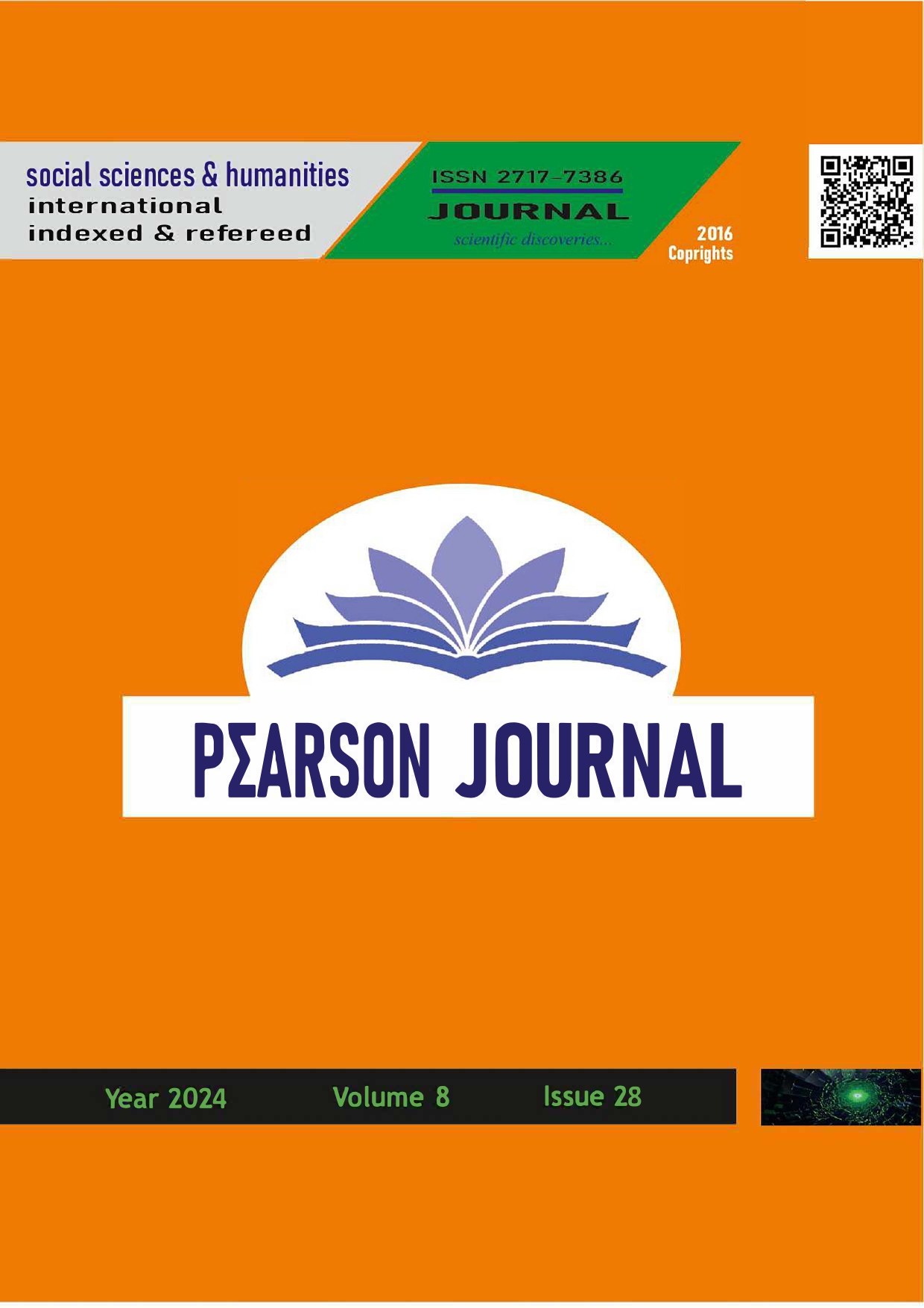Weaknesses and Strengths of the Interest-Free Financial System
DOI:
https://doi.org/10.5281/zenodo.11625473Keywords:
Interest-Free Finance Model, Participation Banking, Interest SensitivityAbstract
The interest-free finance model, which gained bank status in our country with the legal regulation made in 2005 and is called participation bank, has made significant contributions to development of Turkish economy for approximately 40 years. From 1960s until today, a large segment of people with religious sensitivities in the world and in our country have begun to voice louder that an alternative system to interest-based banking system should exist. While this group of people, who do not want to work with banks due to interest sensitivity, continue to produce and add value because they do not want to use the services offered by interest-based banking model, their savings, which correspond to this added value, remain idle outside financial system. In this regard, interest-free finance system, which was first established in our country in 1983, is today actively used by a segment of millions, thus these funds, which remained idle in the past, are now gaining value by being included in production and investments within financial system. Although the share of participation banks operating with the interest-free financial system in banking sector has not increased at desired rate, the fact that interest-free banking model has both strengths and weaknesses compared to interest-based banking model is the most important evidence that interest-free banking model has a future and development potential in banking sector in the future. Today, participation banks can offer many of the services offered by deposit banks in accordance with interest-free finance model in banking sector, in other words, they complete banking system and contribute to development of our country's economy by offering products and services that traditional banks cannot offer. In our study, the weaknesses and strengths of interest-free finance model were discussed and its contributions to our economy were evaluated.
References
Ahmad, I. & Shabbir, G. (2024, 01 10). Frequently Asked Questions (FAQs) on Islamic Banking. Islamic Banking Department, State Bank of Pakistan, Karachi. http://www.sbp.org.pk/departments/ibd/FAQs.pdf
Arabacı, N. (2007). Katılım Bankalarının Türkiye'de Bankacılık Sektöründeki Yeri, İşleyişi ve Performans Analizi, (Yayımlanmamış Yüksek Lisans Tezi), Eskişehir Anadolu Üniversitesi Sosyal Bilimler Enstitüsü, Eskişehir.
Aktepe, İ, E. (2010). İslam Hukuku Çerçevesinde Finansman ve Bankacılık. Erkam Matbaası, İstanbul.
Atılgan, Y. K. (1996). İslam’ın Ekonomik Politikaları. Nesil Yayınları, İstanbul.
BDDK (2014, 07 24). bddk.org.tr web sitesi:
https://www.bddk.org.tr/WebSitesi/turkce/Raporlar/Diger_Raporlar/13334calistay_raporu_24072014.pdf
Dikmen, S. (2019). Katılım Bankacılığı ve Türkiye Ekonomisine Etkileri (Yayınlanmış Yüksek Lisans Tezi). Yıldırım Beyazıt Üniversitesi, Sosyal Bilimler Enstitüsü, Ankara.
Döndüren, H. (1996). İslâm Ekonomisinde Sermaye Birikimi ve Kullanma Yöntemleri, İLAM Araştırma Dergisi. Cilt 1, Sayı 2.
Iqbal, Z.and Mirakhor,A. (2011). An Introduction to Islamic Finance Theory and Practice. John Wiley & Sons (Asia) Pte. Ltd., Second Edition, Singapore.
İslamoğlu,M. ve Can, Ş,S. (2023). Türkiye’de Katılım Bankacılığının Gelişimi ve Katılım Bankacılığı Sektörü Swot Analizi Finans Ekonomi ve Sosyal Araştırmalar Dergisi, Cilt.8 Sayı.2.
Kaya, Ö. (2010). Katılım Bankacılığının Gelişimi ve Türk Bankacılık Sistemi İçerisindeki Etkinliğinin Araştırılması. (Yayımlanmamış Yüksek Lisans Tezi), İstanbul Üniversitesi Sosyal Bilimler Enstitüsü, İstanbul.
Maurer, B. (2005). Mutual Life, Limited: Islamic Banking, Alternative Currencies, Lateral Reason. Princeton University Press.
Parsa, M. (2020). Efficiency and Stability of Islamic vs. Conventional Banking Models: A Meta Frontier Analysis. Journal of Sustainable Finance & Investment.
Pekcan, M. (2006). Katılım Bankacılığı Faaliyetleri ve Muhasebe Sistemi. (Yayınlanmamış Yüksek Lisans Tezi), Sosyal Bilimler Enstitüsü, Uludağ Üniversitesi, Bursa.
Söyler, İ. (2014). Hukuki ve Mali Boyutlarıyla Sukuk (Kira Sertifikaları) (1. b.). Gazi Kitabevi, Ankara.
Şahin, E, (2007). Türkiye’de Dünden Bugüne Katılım Bankaları. (Yayımlanmamış Yüksek Lisans Tezi), Kadir Has Üniversitesi, Sosyal Bilimler Enstitüsü, İstanbul.
Tabakoğlu, A. (2013). İslam İktisadına Giriş. Dergâh Yayınları, İstanbul.
Tabakoğlu, A. ve Erdoğan, A. (2014). İslam Ekonomisi. Dünya Bülteni. https://www.dunyabulteni.net/islam-iktisadi-ve-politik-ekonomi/islam-ekonomisi-h45494.html [19 Şubat].
TKKB Eğitim (2024, 03 14). tkbbegitim.org.tr web sitesi:
TKKB Eğitim (2023, 12 09). tkbbegitim.org.tr web sitesi:
https://tkbbegitim.org.tr/Documents/Yonetmelikler/Yasayan-ve-Gelisen-Katilim-Bankaciligi.pdf
TKKB Eğitim (2024, 01 18). tkbb.org.tr web sitesi:
https://www.tkbb.org.tr/kurumsal/hakkimizda/tarihce
TÜBİTAK Ansiklopedi (2024, 02 05). ansiklopedi.tubitak.gov.tr web sitesi: https://ansiklopedi.tubitak.gov.tr/ansiklopedi/katilim_bankaciligi#:~:text=T%C3%BCrkiye'de%20ise%2016.12.1983,Bankac%C4%B1l%C4%B1k%20Kanunu'na%20tabi%20k%C4%B1l%C4%B1nm%C4%B1%C5%9Ft%C4%B1r.
Usmani, M. (2002). Meezan Bank’s Guide to Islamic banking. Darul Ishaat, Karachi, Pakistan.
Usmani, M. (2004). An Introduction to Islamic Finance. Arham Shamsi. Karachi, Pakistan
Warde, I. (2000). Islamic Finance in the Global Economy. Edinburgh University Press.
Yahşi, F, (2000). Özel Finans Kurumları’nın Mevzuat Serüveni. Albaraka Türk Bereket Dergisi, Sayı 9.
Yılmaz, O. (2010). Faizsiz Bankacılık İlkeleri ve Katılım Bankacılığı. Türkiye Katılım Bankaları Birliği, İstanbul.
Ziraat Katılım (2024, 12 15). ziraatkatilim.com.tr web sitesi:
https://www.ziraatkatilim.com.tr/katilim-bankaciligini-taniyin
Downloads
Published
How to Cite
Issue
Section
License
Copyright (c) 2024 PEARSON JOURNAL

This work is licensed under a Creative Commons Attribution 4.0 International License.



